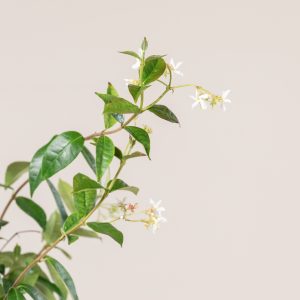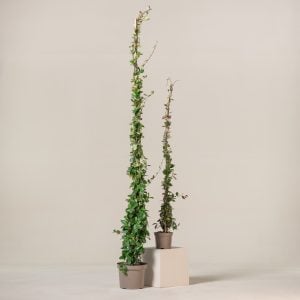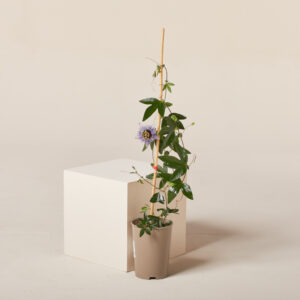Trachelospermum jasminoides (commonly known as Star Jasmine) is one of the most popular outdoor climbing plants, celebrated for its fragrant, star-like flowers and it’s glossy, evergreen foliage. Relatively easy to grow, it is still worth checking these tips to ensure you are optimising the summer blooming period and getting the most out of your plants.
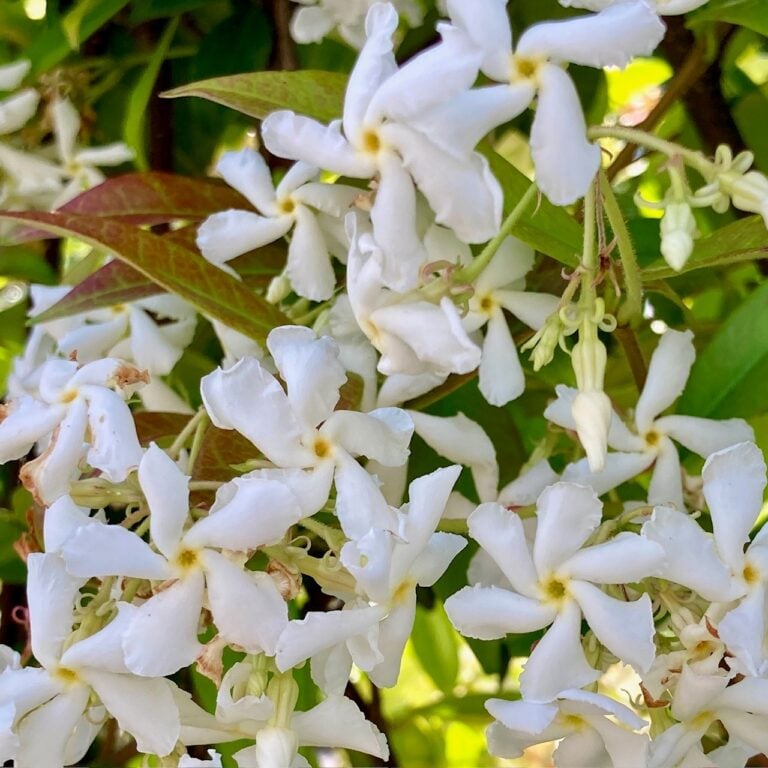
1. Positioning
Choosing the correct position for your Star Jasmine is paramount. Too much shade, and they will be very shy to bloom. Conversely, although they can cope with a southerly aspect in full sun, this may require additional irrigation (see below). Trachelospermum are happiest when they receive 5-6 hours of sunshine daily and some shade from the hottest afternoon sun.
Additionally, although they are considered reliably-hardy in the southeast of the country, Trachelospermum benefit from the shelter of a house wall, particularly in colder areas. Although a hard frost will rarely kill them, they can suffer from frost burn if exposed to northerly winds during a cold spell.
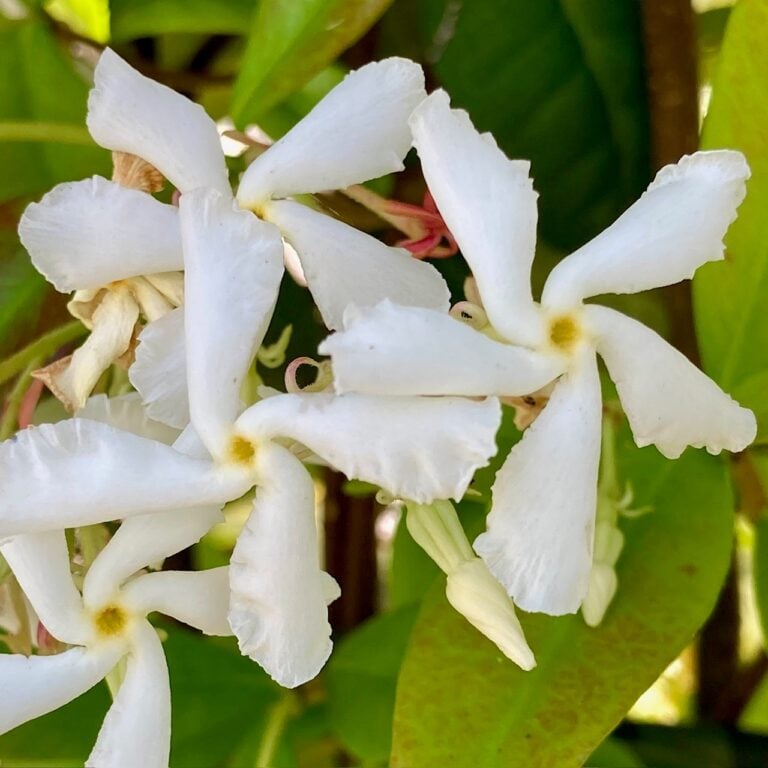
2. Soil and Water
Although they are not particularly fussy when it comes to soil, it does help to know what the optimal requirements are for Trachelospermum. Firstly, it’s crucial to have adequate drainage. Star Jasmine likes to have constant access to moisture, but it hates to sit in wet soil, especially during cooler weather. In damp locations, amend the soil with plenty of grit/gravel to improve drainage and prevent watter-logging.
Regular watering is essential while the plants are getting established. Once they’ve been in the ground for a year, they should be able to access most of their moisture requirements from the soil, but occasional irrigation will help them to look their best.
Enriching the soil before planting will certainly help give your plants the best start possible. They prefer a slightly acidic soil, so dig in plenty of ericaceous compost as well as some well-rotted manure before planting.
If you can’t plant them in the ground, Trachelospermum can also be grown successfully in pots – see below for more information on this.
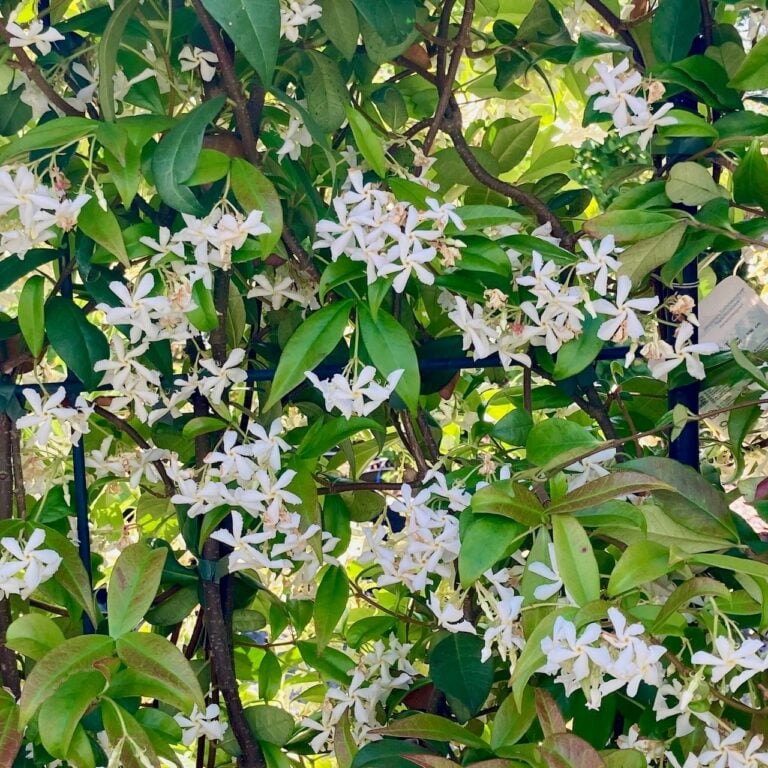
3. Feeding
For vigorous growth and the best flower display, your Star Jasmine will respond well to regular feeding throughout the growing season. We recommend a liquid fertiliser, applied every 4-6 weeks from May-September.
Some people have reported successful results using a high-potassium liquid feed (such as tomato fertiliser) which would make sense as the idea is to encourage the plants to produce plenty of flowers.
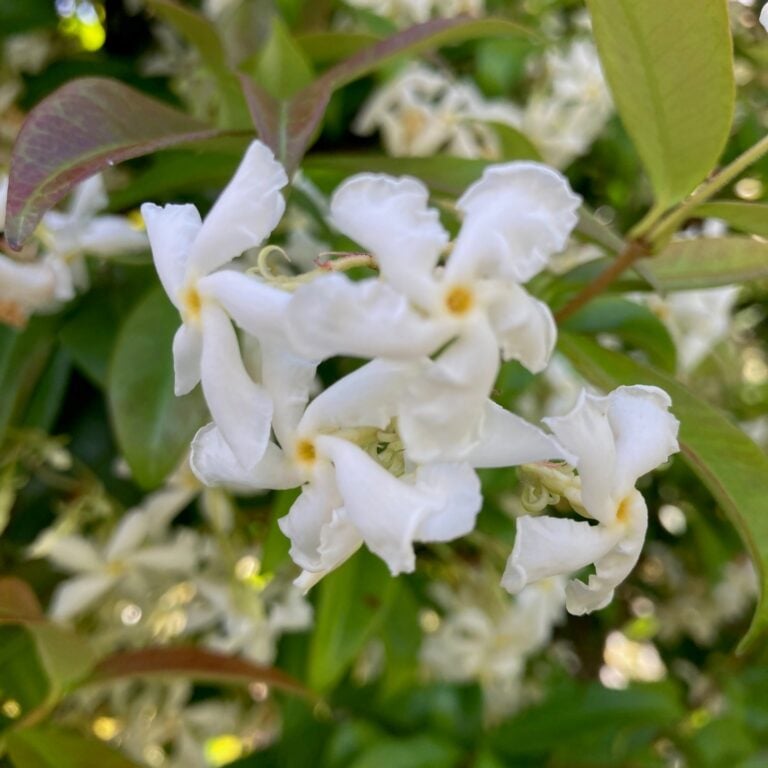
4. Growing Star Jasmine in Pots
If you’re not able to plant Trachelospermum plants in the ground, the good news is that they can be successfully grown in pots. However it is important to bear a few things in mind.
Firstly, you’ll need a large pot as Star Jasmine hates to have its roots confined to a small space. The minimum ideal dimensions would be approximately 50-60cm in diameter and 40-50cm deep. Alternatively, if you can provide a similar volume of soil in a trough, that would also work.
Secondly, be sure to add a layer of large stones, broken rubble, and gravel at the bottom to ensure adequate drainage. As mentioned above, these plants hate to sit in cold, wet soil. At the same time, you’ll also need to be prepared to water regularly throughout the warmer months. In heatwaves this could mean everyday! If you don’t already have an irrigation system in place, you may want to consider installing one. Letting the pot dry out completely, even once, can prove fatal.
Lastly, the fertiliser requirements for potted plants are higher that those of plants in the ground. Start off with a good-quality compost and be prepared to apply liquid fertiliser every 3-4 weeks throughout the growing season.
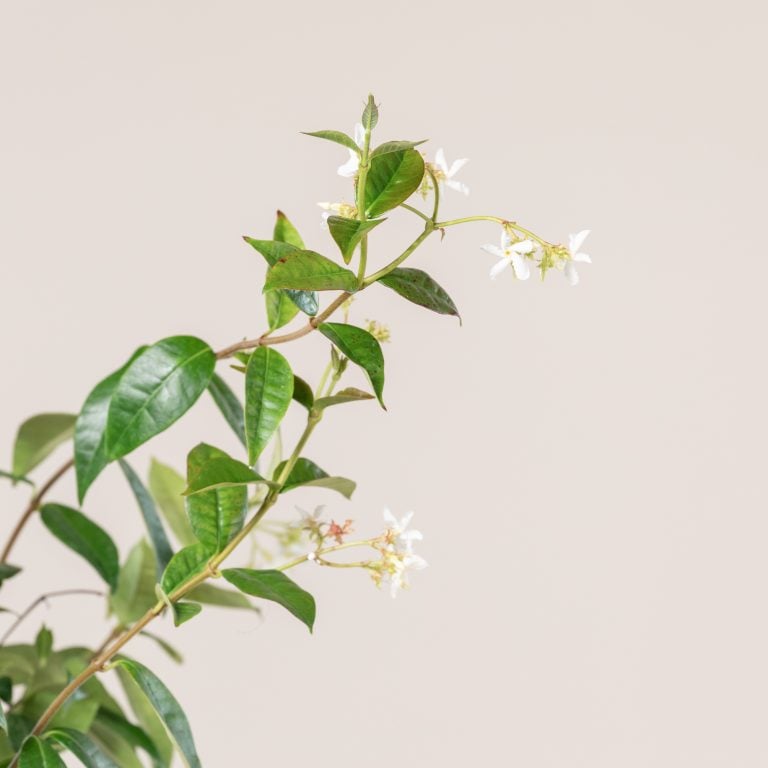
Some last pieces of advice
Follow the advice above and you should have lush, healthy plants that provide a dramatic display of perfumed flowers in mid-summer.
Trachelospermum jasminoides is a self-clinging climbing plant, but it may need some assistance when first planted, so have some twine handy to tie the plant onto whatever support you are providing.
It is quite normal to see a slight red or bronze tint to the leaves in winter, but if this becomes pronounced and affects the entire plant then you should check to make sure the soil is neither too wet nor too dry.
Related products
Related reading
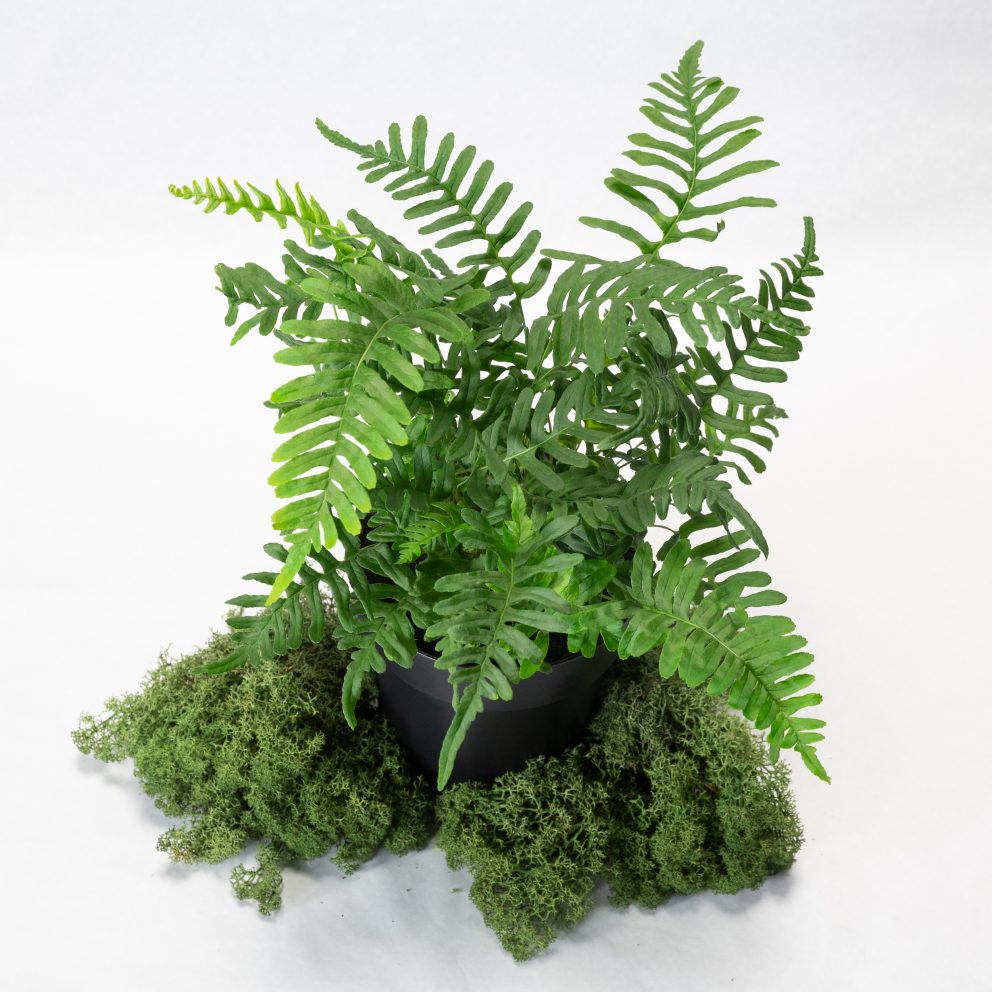
Ground Ferns 101: How to look after your ground ferns
Ground ferns are an extremely diverse category of plants that have survived since the age of dinosaurs. They are instantly recognizable by their pleasing architectural foliage, often finely divided.
Read article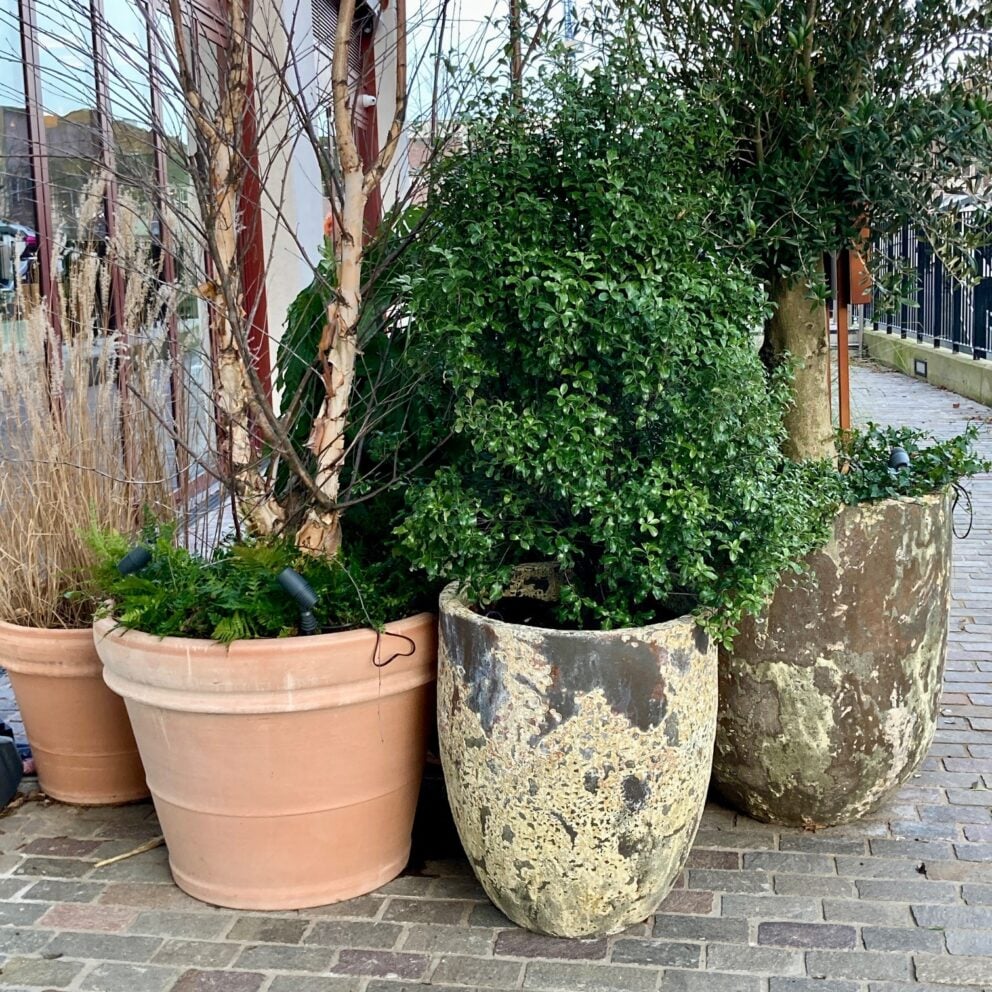
How to frost-proof your outdoor pots
All of the outdoor pots we sell here at The Palm Centre are frost-proof. Even so, there are many things you can do to protect your pots from frost and keep them looking their best year-round. Read our handy tips below…
Read article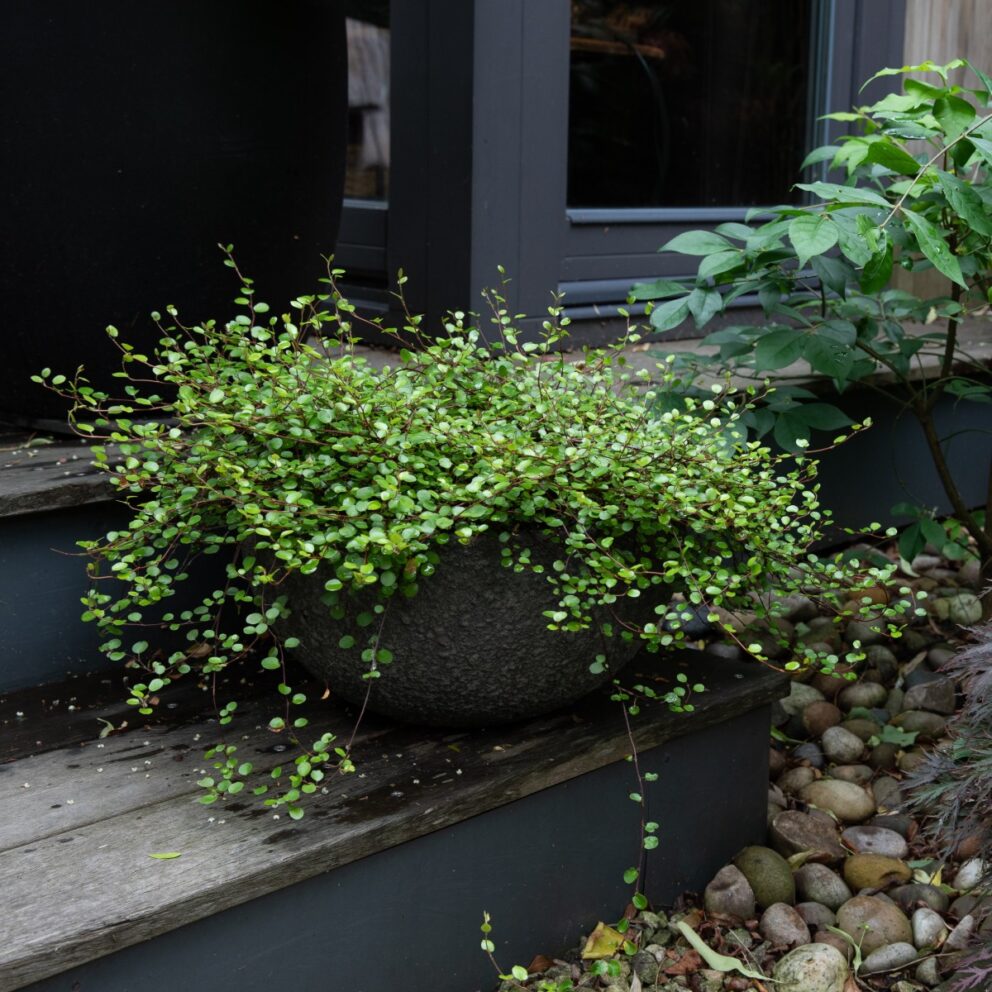
Top 10 Garden Plants of 2023
Looking for inspiration for your garden as the growing season gets underway? With spring just around the corner a lot of people are wondering which plants are trending, and how they can incorporate them into their garden.
Read article
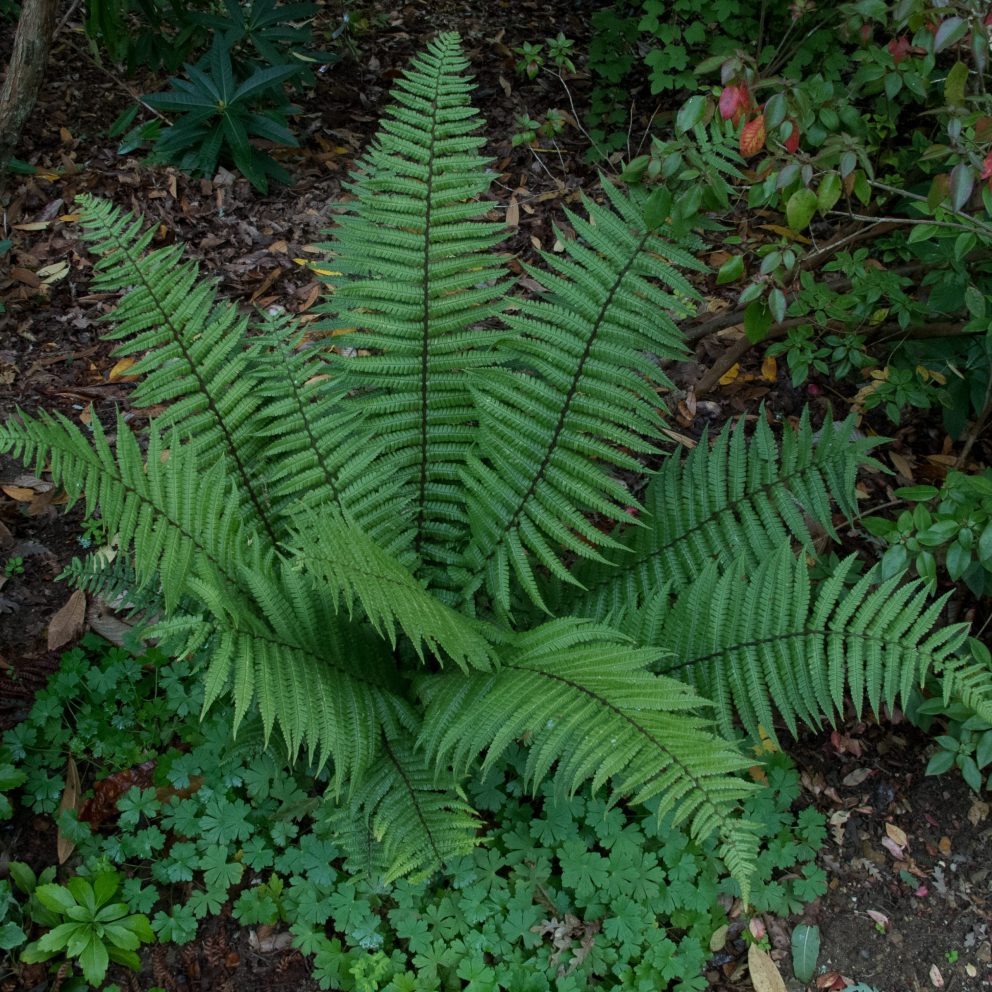
Popular questions about Ground Ferns
Got a question about ground ferns? The answer is probably here…
Read article